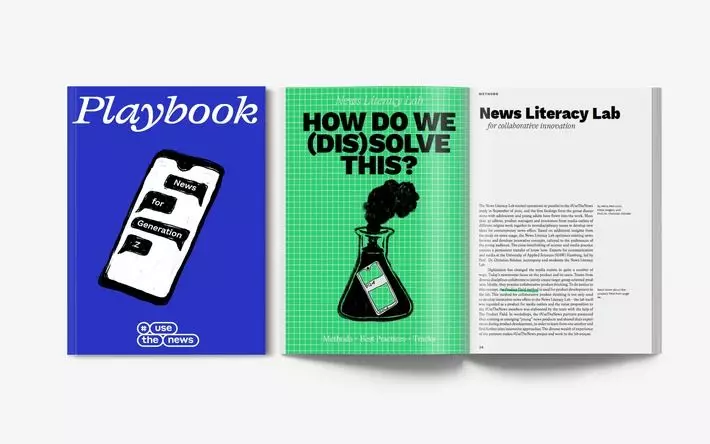
News offerings for Generation Z: #UseTheNews playbook published by dpa, BDZV, and HAW Hamburg
How do young people in Germany find out about news and how can contemporary news services be developed for Generation Z? With the #UseTheNews project, media organizations and media research institutes are getting to grips with changes in news usage and developing new information services specifically for the under 30s. The playbook provides valuable insights and findings on this topic. It is published by the German Press Agency dpa and the German Association of Digital Publishers and Newspaper Publishers (BDZV). Hamburg University of Applied Sciences (HAW Hamburg) is supporting the project.
In addition to basic information about changing attitudes and usage habits, the playbook offers inspiration and concrete recommendations for the development of new news offerings. It also provides insights into the state of contemporary news literacy education in schools. More than 50 experts share their knowledge in the approximately 150-page playbook.
"The media industry is facing a major joint task for the future: How can young people be convinced of the relevance of journalistic work and what kind of content will make that happen?" says Peter Kropsch, Chairman of the Executive Board at dpa and member of the steering committee of the #UseTheNews Board of Trustees. "The playbook is an impressive documentation of how the industry has embarked on the right path. The #UseTheNews study provides reliable figures, creative prototypes are being developed in the News Literacy Lab, and methods are shown for improving the way knowledge about media and journalism is imparted to schools," Kropsch continued.
"For this study, many different stakeholders have come together who normally compete fiercely with each other in the German media market," says Dietmar Wolff, Chief Executive of the BDZV. "For the first time, we are now all thinking together about news consumption consistently from the perspective of the young target group: What works? How and in what form? Via which channel? In addition to a large number of interesting results of qualitative and quantitative studies, the open and collegial collaboration between newspaper and broadcasting companies, dpa, and the Leibniz Institute has also produced a playbook with numerous suggestions and best practice examples that editorial teams can freely avail of. A win-win-win situation in which the BDZV was very happy to participate," emphasizes Wolff.
"The News Literacy Lab shows what enormous creative potential there is in German media organizations, whether public or private - and what dynamics can unfold when creative people cooperate across company boundaries and journalistic trades," says Professor Christian Stöcker of HAW Hamburg. "Media companies have recognized that we are in the midst of a major transformation process, and they are now ready for unconventional approaches. Seeing the pace at which interdisciplinary ideas are being created and implemented is impressive," Stöcker says.
Contents of the playbook:
- Studies: What the #UseTheNews study reveals about teens and young adults and what we can learn from it for journalism and education policy. Includes an overview of current studies on media and news usage.
- Product development methods: How newsrooms develop new products for young audiences and how successful product thinking works in journalism.
- Best practices: Successful media offerings for young people in Germany - media professionals report on the challenges and lessons learned while developing new formats.
- International best practices: Young media professionals give insights into the ways they have achieved success when it comes to reaching young target groups. Includes an overview of international best practices.
- The #UseTheNews topic groups and their projects: Innovative product developments and first pilot projects on the topics of audio/podcast, formats, collaboration, product/brand, language, topics, and video. Includes practical tips.
- News literacy in schools: What we know about teaching news literacy in the classroom and how the Open News Education (ONE) approach can complement and link existing offerings to promote news and media literacy.